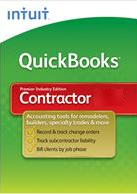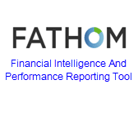To effectively deal with toxic employees, it's essential first to identify poisonous behavior. This can include constant negativity, gossiping, bullying, or undermining colleagues. In the construction industry, toxic behavior can manifest as disregarding safety protocols, cutting corners, or fostering a culture of non-compliance.
Understanding troublesome conduct
- Intentional vs. unintentional
Before you can tackle the issue, it's essential to understand whether the problematic actions are intentional or a result of the other problems. Intentional bad conduct often stems from personal grievances or a desire to undermine authority. On the other hand, unintentional actions might be due to personal struggles, misunderstandings, or lack of awareness.
Understanding the root cause is crucial because it determines your response strategy. For example, intentional troublemaking might require firmer actions than unintentional issues, which might be resolved with support and guidance.
Early recognition of problematic conduct can prevent it from escalating. Look for signs such as frequent conflicts with colleagues, consistent underperformance, or a noticeable dip in team morale. Address these issues promptly to avoid long-term repercussions.
Toxic conduct doesn't just affect the individual involved; it can spread like wildfire, impacting the broader team. It can lead to increased stress, reduced collaboration, and higher turnover rates. Understanding the wider impact highlights the importance of addressing the issue head-on.
Tackling the problem head-on
Avoiding the problem is never a good strategy. Instead, address the issue directly with the troublesome team member. Start by scheduling a private meeting to discuss specific concerns. Be clear about the actions that need to change and provide concrete examples.
Addressing toxic behavior often starts with open communication. Construction managers and supervisors must create a work culture where employees feel safe to voice their concerns. Encouraging open communication can help identify toxic behavior early on and prevent it from escalating.
Engage in an open dialogue where the employee can share their perspective. Understanding their viewpoint can offer insights into potential solutions. Ensure the conversation remains respectful and focused on finding a resolution.
- Consistent follow-through
Consistency is key when managing toxic workplace conduct. After the initial discussion, follow up regularly to monitor progress. This shows the employee that you're serious about making positive changes and are there to support them through the process.
- Detailing specific actions
Communicate the issues clearly by detailing specific actions that are problematic. Vague feedback can lead to misunderstandings and may result in something other than the desired changes. Be precise about what needs to improve and why.
Impact on the team and business as a whole
Explain the impact of their conduct on the team and the business as a whole. Sometimes, employees are unaware of how their actions affect others. Highlighting the broader consequences can motivate them to change.
Set clear expectations for conduct moving forward. This includes outlining the company's values, code of conduct, and expectations for teamwork and collaboration. By clearly defining unacceptable behavior, employees are less likely to engage in toxic conduct. Outline the standards you expect and the timeline for improvement. This gives the employee a clear roadmap to follow.
Sometimes, toxic behavior can stem from underlying issues such as stress, burnout, or lack of training. Providing support for employees who may be struggling and offering training programs to develop their interpersonal and communication skills can help in addressing toxic behavior.
Ensure that the employee has the necessary resources and support to improve. This could include training sessions, mentoring programs, or adjustments to their workload. Providing these tools shows your commitment to their development.
Pair the employee with a mentor or coach who can offer guidance and support. This relationship can provide valuable insights and help employees develop new skills and attitudes.
Sometimes, problematic conduct stems from being overwhelmed. Assess the employee's workload and make necessary adjustments to ensure they can perform at their best without undue stress.
Documenting everything
Maintain detailed records of all interactions and steps taken to address the issue. Documentation is crucial if further action is needed and provides a clear history of your efforts to resolve the situation.
- Importance of transparency
Be transparent with the employee about the documentation process. This will help build trust and ensure they understand the seriousness of the situation.
Preparing for future actions
Detailed records can be invaluable if the conduct doesn't improve and more serious actions are required. They provide a clear trail of your efforts and the employee's responses. Being prepared for tough decisions when enough is enough!
Despite your best efforts, some employees may not improve. Acknowledging when enough is enough to protect your team's well-being and your business's success is essential.
When toxic behavior persists despite efforts to address it, decisive action may be necessary. This can include implementing disciplinary measures, reassigning responsibilities, or, in severe cases, terminating employment. Handling these situations with professionalism, empathy, and adherence to company policies and labor laws is essential.
Be prepared to make difficult decisions; while potential termination is never an easy choice, sometimes it's necessary for the greater good of the business.
- Protecting team well-being
Your primary responsibility is to ensure a healthy and productive work environment for all employees. Protecting the team's well-being should always be a top priority.
In summary
Dealing with toxic employees is a challenging but essential aspect of managing a small business. You can transform your workplace into a harmonious and productive environment by understanding the types of troublesome conduct, tackling issues head-on, communicating clearly, providing support, documenting everything, and being prepared for tough decisions.
Remember, the key to success lies in consistent follow-through and a commitment to fostering a positive workplace culture. Recognizing and rewarding positive contributions, fostering a sense of teamwork and camaraderie, and leading by example can all contribute to creating a healthy work environment where toxic behavior is less likely to thrive.
If you need more advice or support, reach out—we're here to advocate for you. Whether you need help with construction bookkeeping or want a listening ear, I am just a phone call or email away.

![]() Sharie DeHart, QPA, co-founded Business Consulting And Accounting in Lynnwood, Washington. She is the leading expert in managing outsourced construction bookkeeping and accounting services companies and cash management accounting for small construction companies across the USA. She encourages Contractors and Construction Company Owners to stay current on their tax obligations. She offers insights on managing the remaining cash flow to operate and grow their construction company sales and profits so they can put more money in the bank. Call 1-800-361-1770 or sharie@fasteasyaccounting.com
Sharie DeHart, QPA, co-founded Business Consulting And Accounting in Lynnwood, Washington. She is the leading expert in managing outsourced construction bookkeeping and accounting services companies and cash management accounting for small construction companies across the USA. She encourages Contractors and Construction Company Owners to stay current on their tax obligations. She offers insights on managing the remaining cash flow to operate and grow their construction company sales and profits so they can put more money in the bank. Call 1-800-361-1770 or sharie@fasteasyaccounting.com
































